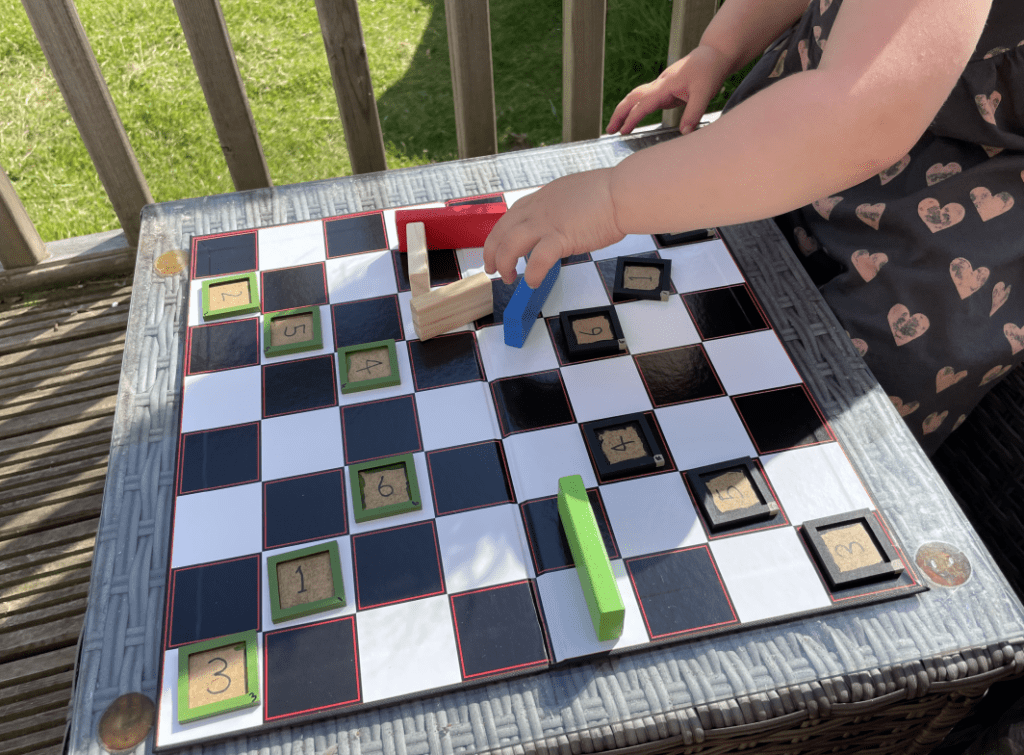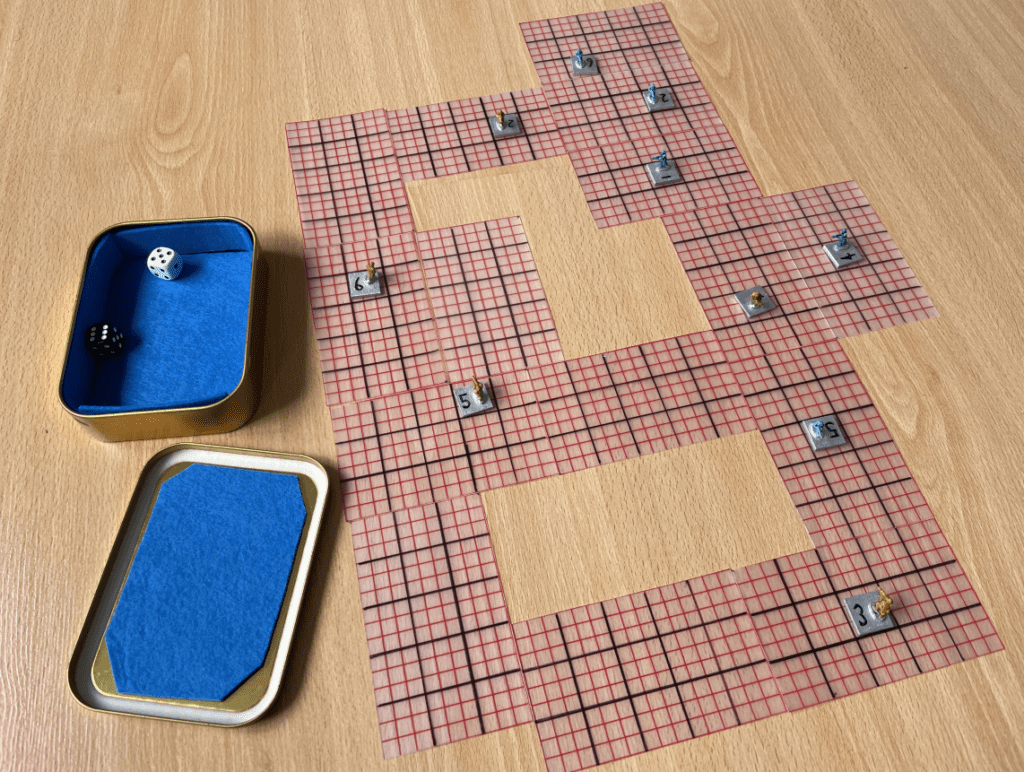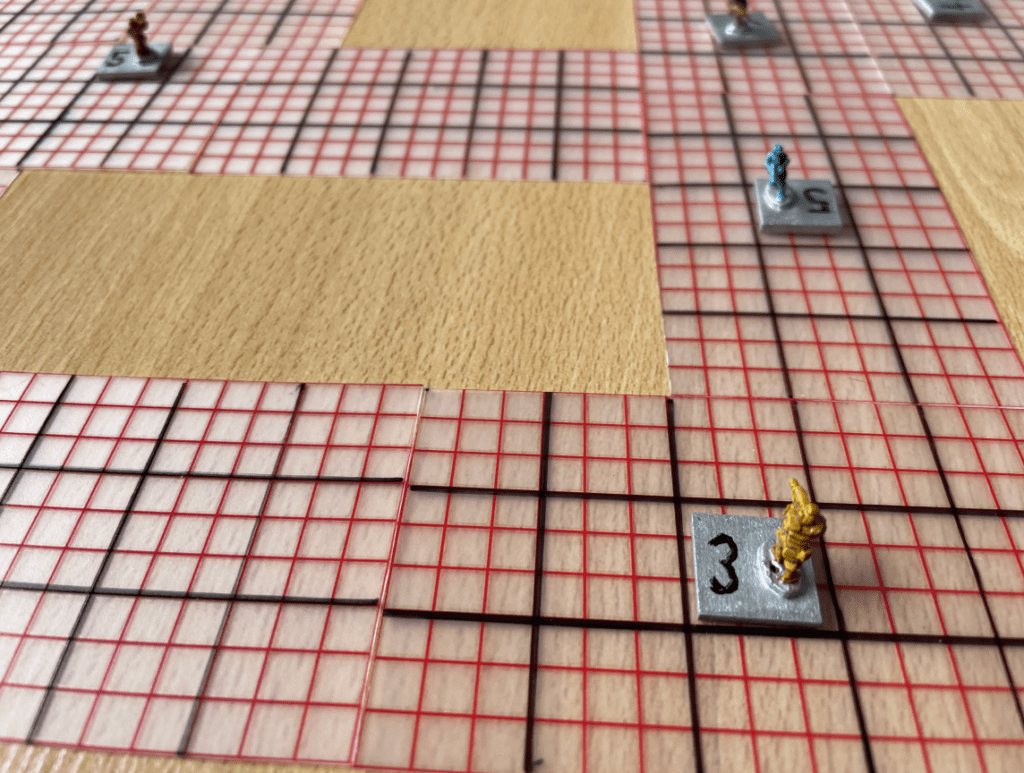A recent conversation with Mike Hutchinson on the subject of Chess 28 had me revisiting a recurring ambition: to create a “wargame in a tin”.
It was the thought of a grid-based system like a chessboard that stirred some ideas in my mind.
Now, I know, crucially, you can’t put a chessboard in a tin, (not unless it is a very big tin), but this was enough to get me started with a basic framework.
To back up a little, my daughter is the proud owner of a Farm in a Tin. Each time we’re out at dinner, the table becomes an agricultural utopia with little wooden sheep and cows grazing happily on the set’s felt mat. As I’m sitting there (usually on my 3rd or 4th pint), I start to think to myself, “Wouldn’t it be cool if there was a wargame in a tin?”

But I’m no game designer. I had no idea where to start. What I did have, though, were some core criteria:
- Minimal components
- Minimal dice rolling
- No bookkeeping
- A healthy balance of luck and skill
- Infinite setup and scenario possibilities
That’s a lot to ask from one small tin. But, the thought of using a chessboard for a game other than chess had me reaching for the ubiquitous “Chess & Drafts” set in the cupboard. I had just recently painted up a set of single-figure trays from Warbases, and numbered each of them, so the game suddenly took shape in my head.

- Each player has six miniatures, numbered 1-6.
- On your turn, you roll two D6. One is the “Activation dice”, the other is the “Action dice”.
- The Activation dice tells you which of your miniatures to activate.
- The Action dice tells you how many action points they have, either to move or shoot.
- For example, if you roll a four, you can move two, shoot two, or move one, shoot three. Or, just move four.
- Shooting results in an immediate kill – there are no saving rolls.
- For each miniature you lose, you get a +1 to your Activation dice in your next turn.
That last addition was brought in to keep the game competitive to the end. Thematically, this could be depleted forces getting more and more desperate, powerful, or dangerous. Tactically, it means you want to avoid having any of your own guys too close together – the enemy’s last man standing can do a tonne of damage if they roll a six with a +5 modifier!
Some blocking terrain (the wee one’s wooden blocks) made it more interesting, and meant that no two games ever had to be the same. Then (and still thinking, “I’ll never fit this chessboard in a tin!”), I bought some plastic graph template sheets and cut them up into handy “dungeon tiles”.

I got some 10mm figures from Pendraken to form the two rival warbands. They are mounted on 15mm x 15mm bases.
Finally, I cut up and glued some felt to the inside of a tobacco tin. This will be especially handy for silent dice rolling in public places and generally not annoying anyone. I’ll just need some bubble wrap in there to stop the pieces ratting about during transportation. I’m also looking into magnetising the bottom of the bases.

So there you have it, my very own “wargame in a tin” – Space Saverz. Sci-fi, space and all that, combined with… well, saving space. You get the idea.
